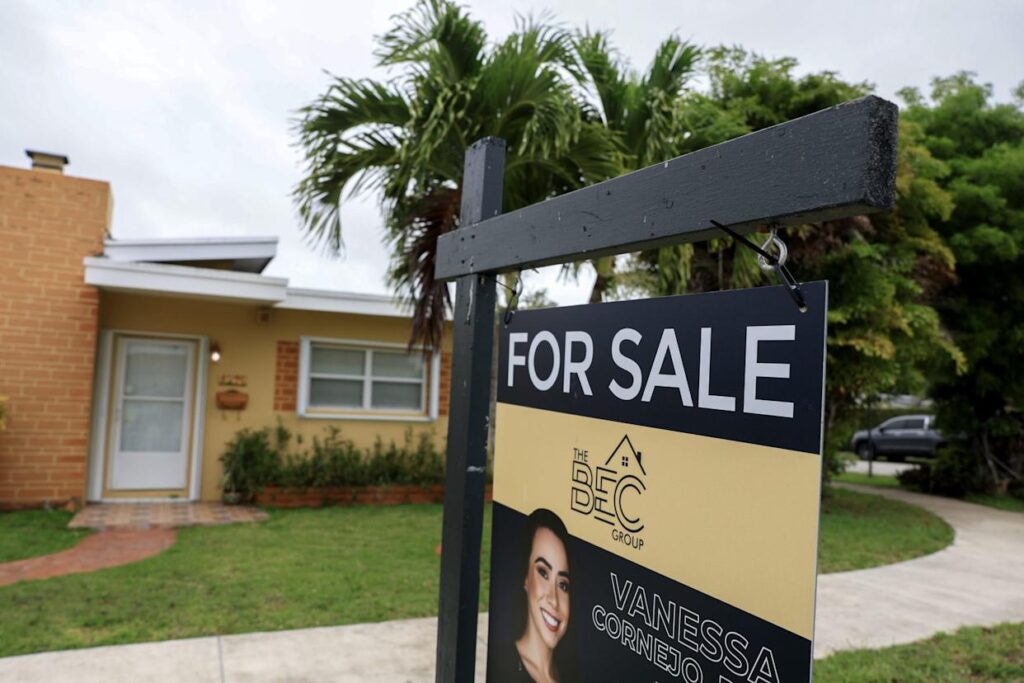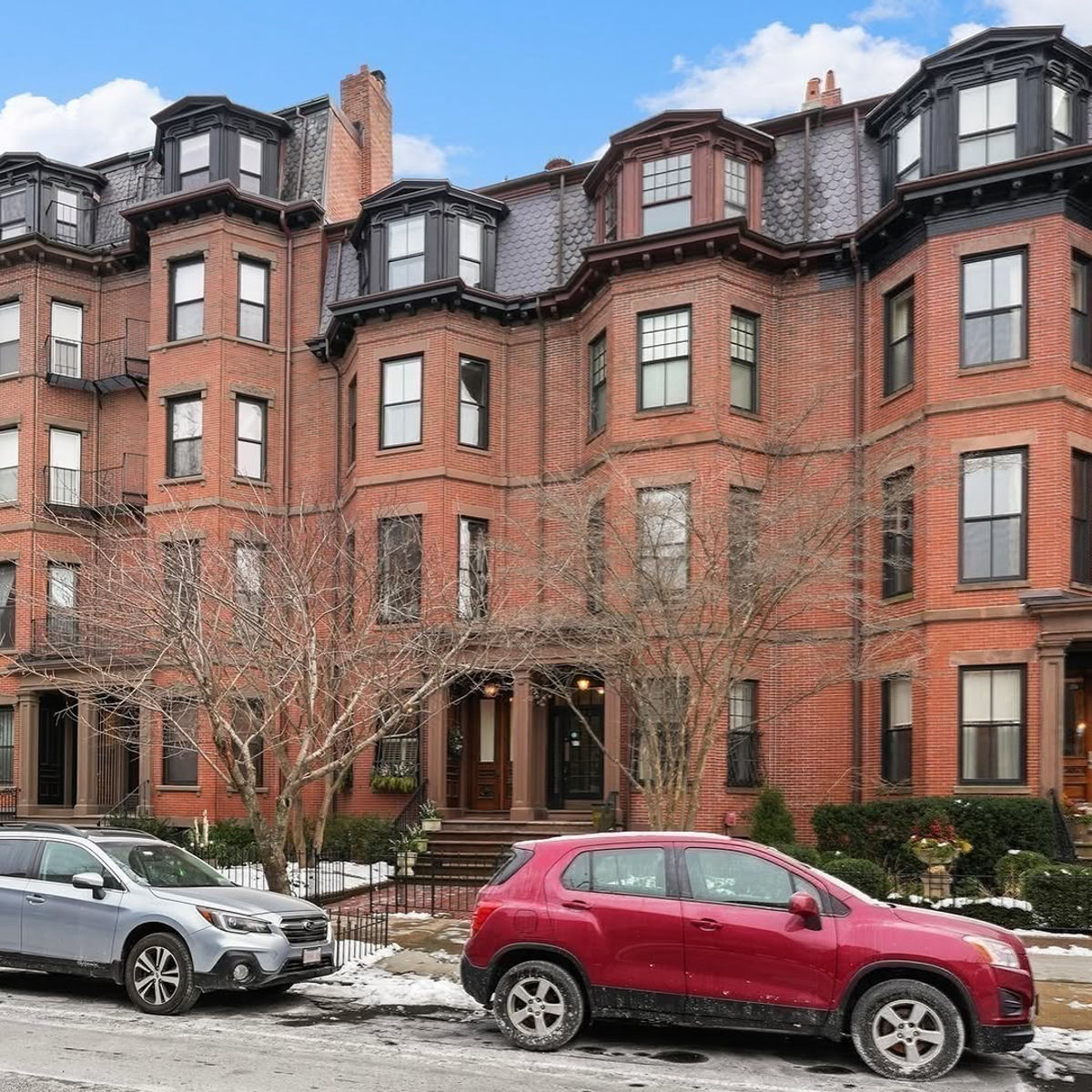The American real estate market is experiencing significant shifts as we move through 2025, with some cities facing unprecedented challenges that could lead to substantial drops in home values. While the national housing market shows mixed signals, certain metropolitan areas are particularly vulnerable to price corrections due to a combination of economic factors, oversupply issues, and changing demographic patterns.
Understanding which cities may experience declining home values is crucial for homeowners, investors, and potential buyers looking to make informed decisions in today’s volatile market. The following analysis examines seven cities where real estate experts predict significant value drops in the second half of 2025.
Understanding the Current Real Estate Climate
The 2025 housing market presents a complex landscape where traditional market indicators are being challenged by unprecedented economic conditions. Elevated mortgage rates throughout 2025 suggest that housing market activity will remain sluggish, creating a buyer’s market in many regions previously considered seller-friendly.
Several key factors are driving the current market dynamics:
Interest Rate Impact: High mortgage rates continue to suppress buyer demand, making homes less affordable for average Americans. This reduced purchasing power directly affects home values, particularly in markets where prices had reached unsustainable levels.
Inventory Surge: Single-family existing homes for sale are up roughly 20% year-over-year, though still below historical norms. This increasing supply, combined with reduced demand, creates downward pressure on prices.
Economic Uncertainty: Rising unemployment in certain sectors and regions is affecting local housing markets differently, with some cities bearing the brunt of economic shifts more severely than others.

Key Market Indicators Predicting Value Declines
Real estate analysts use several metrics to predict market downturns. Cities facing potential value drops typically exhibit:
- Price-to-Income Ratios: When median home prices significantly exceed local median incomes, markets become unsustainable
- Days on Market: Increasing time properties spend unsold indicates weakening demand
- Inventory Levels: Rising inventory without corresponding buyer interest signals oversupply
- Job Market Weakness: Employment instability directly correlates with housing demand
- Population Outmigration: Cities losing residents face reduced housing demand
1. Austin, Texas: Tech Boom Aftermath
Austin represents one of the most dramatic examples of a housing market correction in progress. Austin has been the star of Texas real estate, with prices rising 10% in 2024. However, the median home price of $500,000 is now far beyond what most local residents can afford, creating an unsustainable market dynamic.
Current Market Conditions: The Austin metro area experienced explosive growth during the pandemic as tech companies and remote workers flocked to Texas. However, this rapid appreciation has created significant affordability challenges. Local salaries have not kept pace with housing costs, and many tech companies have implemented layoffs or hiring freezes.
Predicted Decline Factors:
- Oversupply of luxury homes priced beyond local market capacity
- Tech sector job losses affecting high-income buyers
- New construction continuing to add inventory without corresponding demand
- Property tax increases making homeownership more expensive
Expected Timeline: Real estate analysts predict Austin could see home values decline 8-15% by the end of 2025, with the steepest drops occurring in the luxury segment and suburban developments built during the pandemic boom.
2. San Francisco, California: Post-Pandemic Readjustment
San Francisco’s housing market faces unique challenges as the city grapples with long-term effects of remote work policies and urban exodus trends. The city that once commanded the highest home prices in the nation is experiencing a significant market correction.
Current Market Conditions: Commercial real estate struggles are affecting residential markets as office buildings sit empty and businesses relocate. The city’s high cost of living, combined with quality-of-life concerns, continues to drive residents to more affordable markets.
Predicted Decline Factors:
- Continued outmigration to suburban and out-of-state markets
- Commercial real estate crisis affecting overall property values
- High property taxes and maintenance costs
- Reduced demand from tech workers who can now work remotely
Market Outlook: Industry experts predict San Francisco home values could drop 10-18% in the second half of 2025, particularly affecting condominiums and homes in previously hot neighborhoods like SOMA and Mission Bay.
3. Portland, Oregon: Economic and Social Challenges
Portland’s housing market faces a perfect storm of economic pressures and social challenges that are expected to significantly impact home values. While the overall trend shows prices are still increasing compared to the previous month, underlying market fundamentals suggest this growth is unsustainable.
Current Market Conditions: The city struggles with downtown revitalization challenges, business relocations, and changing demographics. Many companies have reduced their Portland footprint, affecting employment and housing demand.
Predicted Decline Factors:
- Business relocations affecting employment base
- Urban quality-of-life concerns driving suburban migration
- High state income taxes making the area less attractive to high earners
- Oversupply in certain segments due to previous development boom
Expected Impact: Portland could experience home value declines of 6-12% by year-end, with urban condominiums and downtown properties facing the steepest corrections.
4. Seattle, Washington: Tech Sector Corrections
Seattle’s housing market, heavily dependent on the technology sector, faces significant headwinds as major employers reduce their workforce and office footprint. The city’s previous housing boom is now showing signs of unsustainable growth.
Current Market Conditions: Major tech companies including Amazon and Microsoft have implemented significant layoffs, directly affecting the high-income buyer pool that drove Seattle’s housing boom. Additionally, remote work policies have reduced demand for expensive urban housing.
Predicted Decline Factors:
- Technology sector job cuts reducing buyer pool
- High cost of living driving residents to more affordable markets
- Increased inventory as former tech workers relocate
- Commercial real estate struggles affecting overall market sentiment
Market Projection: Seattle home values are projected to decline 7-14% in the latter half of 2025, with the steepest drops expected in neighborhoods that previously commanded premium prices due to proximity to tech campuses.
5. Denver, Colorado: Affordability Crisis Impact
Denver’s housing market exemplifies how rapid price appreciation can create unsustainable conditions. The city faces a significant affordability crisis that’s beginning to impact demand and, consequently, home values.
Current Market Conditions: Despite Colorado’s natural attractions and business-friendly environment, housing costs have outpaced income growth substantially. Many residents are being priced out of homeownership, reducing the buyer pool.
Predicted Decline Factors:
- Extreme price-to-income ratios making homes unaffordable for local workers
- Increased inventory as builders completed projects started during the boom
- Rising property taxes adding to ownership costs
- Competition from more affordable markets in surrounding states
Value Projection: Denver is expected to see home value corrections of 5-10% by the end of 2025, with suburban developments and mid-range properties most affected.
6. Phoenix, Arizona: Speculative Market Cooling

Phoenix represents a classic example of speculative market overheating followed by inevitable correction. The city attracted significant investor activity during the pandemic, creating artificial demand that’s now dissipating.
Current Market Conditions: The Phoenix metro area experienced massive investor interest, with cash buyers driving up prices beyond sustainable levels. As investment interest wanes and interest rates remain high, the market faces significant adjustment pressures.
Predicted Decline Factors:
- Investor retreat from speculative purchases
- High summer utility costs affecting year-round affordability
- Water resource concerns impacting long-term desirability
- New construction adding supply without corresponding organic demand
Expected Correction: Phoenix home values could decline 8-16% in the second half of 2025, with investor-heavy neighborhoods and newer developments facing the most significant adjustments.
7. Oakland, California: Multiple Market Pressures
Oakland faces a combination of challenges that make it particularly vulnerable to housing value declines. The city struggles with both economic and social issues that are affecting real estate demand.
Current Market Conditions: Oakland’s proximity to San Francisco previously drove demand, but changing work patterns and urban challenges are reducing this advantage. The city faces budget constraints and infrastructure challenges that affect quality of life.
Predicted Decline Factors:
- Reduced spillover demand from San Francisco market cooling
- Public safety and infrastructure concerns affecting desirability
- High property taxes and fees increasing ownership costs
- Business relocations reducing employment opportunities
Market Forecast: Oakland home values are projected to drop 9-17% by the end of 2025, with the steepest declines expected in neighborhoods that previously benefited most from Bay Area spillover demand.
Regional Market Dynamics and Broader Implications
The cities experiencing the most significant value declines share common characteristics that provide insight into broader market dynamics. Prices are also falling in many parts of Texas, especially around the major cities of Austin, Dallas and Houston, indicating regional patterns rather than isolated incidents.
Common Factors Across Declining Markets:
- Overdependence on specific industries or employer types
- Rapid price appreciation that exceeded local income growth
- High cost of living relative to quality of life offered
- Demographic shifts and population changes
- Infrastructure and governance challenges
Economic Ripple Effects: Home value declines in these markets will have broader economic implications, affecting local spending, tax revenues, and consumer confidence. Homeowners may reduce discretionary spending, while local governments face budget pressures from reduced property tax revenues.
Investment and Market Timing Considerations
For potential investors and homebuyers, understanding market timing becomes crucial in these declining markets. While falling prices may present opportunities, several factors require careful consideration.
Buyer Opportunities:
- Increased negotiating power in declining markets
- Better selection of properties as inventory rises
- Potential for long-term value appreciation after correction completes
- Reduced competition from other buyers
Risk Factors:
- Potential for further declines after purchase
- Reduced liquidity in falling markets
- Economic uncertainty affecting employment and income
- Difficulty in securing favorable financing terms
Strategies for Current Homeowners
Homeowners in these markets face challenging decisions about whether to sell now or wait for potential recovery. Several strategies can help minimize losses and maximize future opportunities.
Immediate Actions:
- Conduct realistic property assessments using current market comparables
- Consider refinancing if credit and equity position allow
- Evaluate relocation opportunities if job market permits
- Assess long-term financial capacity to weather market downturns
Long-term Planning:
- Develop contingency plans for various market scenarios
- Focus on home improvements that add genuine value
- Consider rental opportunities if relocation becomes necessary
- Maintain financial flexibility for market opportunities
Future Market Recovery Prospects
While these seven cities face near-term challenges, understanding potential recovery timelines helps in making informed decisions. Historical market patterns suggest that most housing corrections are followed by periods of stabilization and eventual recovery.
Recovery Factors:
- Economic diversification efforts in affected regions
- Infrastructure investments improving quality of life
- Demographic trends that may favor certain markets
- Policy changes addressing affordability and housing supply
Timeline Expectations: Most housing market corrections historically last 18-36 months, with recovery periods varying based on local economic conditions and policy responses. Cities that successfully address underlying challenges tend to recover more quickly and strongly.
Policy and Economic Interventions
Local and state governments in these markets are implementing various strategies to address housing affordability and market stability. Understanding these interventions helps predict potential market impacts.
Government Responses:
- First-time homebuyer assistance programs
- Zoning reforms to increase housing supply
- Tax incentives for affordable housing development
- Infrastructure investments to improve market attractiveness
Federal Policy Implications: National monetary policy, particularly regarding interest rates, will significantly impact recovery timelines in these markets. Federal housing policies and programs may also provide support for affected regions.
Technology and Market Analysis Tools
Modern real estate analysis relies heavily on technology and data analytics to predict market trends and identify investment opportunities. Understanding these tools helps both professionals and consumers make better-informed decisions.
Market Analysis Technologies:
- Predictive analytics using machine learning algorithms
- Real-time market data aggregation and analysis
- Demographic and economic trend modeling
- Automated valuation models incorporating multiple data sources
Consumer Access to Information: Today’s buyers and sellers have unprecedented access to market data, allowing for more informed decision-making than in previous market cycles.
Frequently Asked Questions (FAQs)
Q: How quickly will home values drop in these cities?
A: Market corrections typically occur over 12-24 months, with the steepest declines often happening in the first 6-9 months. However, each market has unique characteristics that affect timing. Cities with stronger economic fundamentals may experience slower, more gradual declines, while markets with severe oversupply or economic challenges may see rapid corrections.
Q: Should I sell my home now if I live in one of these cities?
A: The decision to sell depends on your individual circumstances, including your financial situation, employment stability, and long-term plans. If you need to relocate for work or personal reasons, selling sooner rather than later may minimize losses. However, if you can afford to stay and don’t need to access your home equity, waiting for market recovery might be preferable.
Q: Are these predictions based on reliable data?
A: These predictions are based on current market data, economic indicators, and historical patterns. However, real estate markets can be influenced by unexpected events, policy changes, and economic shifts. While the analysis uses the best available information, no market prediction is guaranteed, and actual results may vary.
Q: Will interest rate changes affect these predictions?
A: Yes, interest rate changes significantly impact housing markets. If rates decrease substantially, it could slow or prevent predicted declines by increasing buyer affordability. Conversely, if rates rise further, declines could be more severe than predicted. Any meaningful decline in mortgage rates will help release pent-up housing demand.
Q: How do these local markets compare to national trends?
A: While national housing market predictions suggest modest growth or stability, local markets can diverge significantly from national trends. Home prices are predicted to rise at a percentage point or so above the rate of inflation, for an estimated increase of about 17% from 2024 levels nationally, but individual cities may experience very different outcomes based on local conditions.
Q: What should first-time homebuyers do in these markets?
A: First-time buyers in declining markets may find opportunities as prices drop and competition decreases. However, they should ensure they have stable employment, adequate emergency savings, and realistic expectations about future value appreciation. Consider waiting for market stabilization if current financial situation is marginal.
Q: How long do housing market corrections typically last?
A: Historical data shows that housing market corrections usually last 18-36 months from peak to trough, followed by stabilization periods of 12-24 months before sustained recovery begins. However, markets with strong economic fundamentals tend to recover more quickly than those facing structural challenges.
Q: Will rent prices also decline in these cities?
A: Rental markets often move differently than sales markets. While some cities may see rental price moderation, others might experience increased rental demand as potential buyers choose to rent instead. Cities like Austin, Charlotte, Phoenix, and Raleigh/Durham may not see any apartment rent growth in 2025 due to oversupply in rental markets.
Q: What are the best strategies for investors in declining markets?
A: Investors should focus on properties with strong rental potential, consider distressed property opportunities, and maintain significant cash reserves for market timing flexibility. Diversification across multiple markets and property types can help reduce risk. Long-term investment horizons are typically more successful in volatile markets.
Q: How accurate are real estate market predictions?
A: Real estate predictions are based on current data and trends, but markets can be influenced by unexpected events, policy changes, and economic shifts. While predictions provide valuable guidance for decision-making, they should be considered alongside personal financial circumstances and risk tolerance. Historical accuracy of market predictions varies, with short-term predictions generally more reliable than long-term forecasts.
Conclusion: Navigating the Changing Real Estate Landscape
The second half of 2025 presents significant challenges for homeowners and investors in these seven metropolitan areas. Austin, San Francisco, Portland, Seattle, Denver, Phoenix, and Oakland each face unique combinations of economic pressures, oversupply issues, and demographic shifts that are expected to drive substantial home value declines.
Understanding these market dynamics is crucial for making informed real estate decisions. While declining values present challenges for current homeowners, they may also create opportunities for qualified buyers and strategic investors. The key lies in thorough market analysis, realistic financial planning, and flexible strategies that can adapt to changing conditions.
As these markets navigate through correction periods, successful participants will be those who understand local conditions, maintain financial flexibility, and make decisions based on comprehensive analysis rather than emotion or speculation. The real estate market’s cyclical nature suggests that current challenges, while significant, represent temporary adjustments rather than permanent changes to these fundamentally desirable metropolitan areas.
For homeowners, buyers, and investors alike, staying informed about market trends, maintaining financial preparedness, and seeking professional guidance when needed will be essential for successfully navigating this challenging but potentially rewarding period in American real estate markets.
![]()






